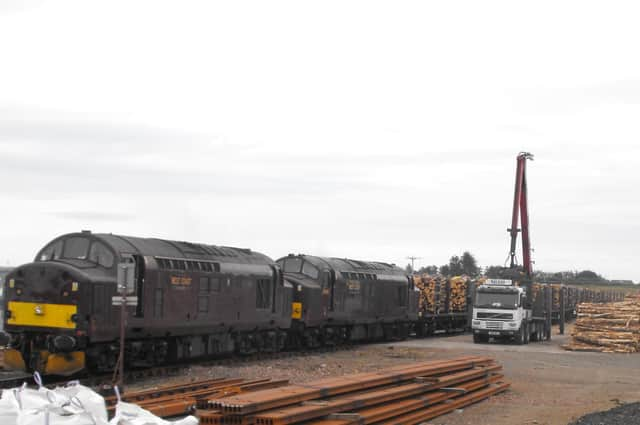Rail is on the right track for the transportation of timber - Maggie Simpson


Harvested and processed timber is a key product for Scotland, serving markets across the UK and internationally. Timber processing plants across Scotland are producing and dispatching a variety of products such as sawn timber, boards and paper products. For this, each needs a regular supply of raw ‘roundwood’ timber from Scottish forests, and the transport of such product from remote locations can be challenging.
There has been a long term ambition to move more by rail. Fergus Ewing MSP, Cabinet Secretary for Rural Economy and Tourism convened a roundtable in March 2019 from which a trial service was established last summer, supported by a grant from Transport Scotland. That trial ran for 6 weeks during which over 1,800 tonnes of roundwood were moved.
Advertisement
Hide AdAdvertisement
Hide AdThe trains were co-ordinated and overseen by Victa Railfreight and were a collaboration between many parties, including Transport Scotland, Network Rail and HITRANS who helped fund and facilitate the trial, customer Munro Handling and rail operators West Coast Railways and DB Cargo. There was significant publicity surrounding the trial at the time, and considerable political support including from Michael Matheson MSP Secretary for Transport, Infrastructure and Connectivity


The trial aimed both to demonstrate how roundwood timber could be moved, and also to identify the steps that would be needed to run a full commercial operation. The findings show that there is a way forward, if a number of key challenges can be resolved.
From a railway perspective there are some issues around the availability of suitable wagons, with those used in the trial sub-optimal for the type of product being conveyed. However, some fairly simple modifications would significantly increase the potential payload, and any new equipment could be better optimised still. There are also challenges with finding space in the timetable for timber trains, but again this could be progressed if a more permanent service were introduced.
A more significant challenge comes from the variability of locations at which harvested timber is produced, and their proximity to the railway. A number of key locations have been identified which need only a modest amount of work to bring into use. Few of these locations will produce enough to support a regular service individually, but together, a network could be established. This would need the timber customers to work together which will need active development although the requirement for businesses to secure felling licences means that there should be an ability both to identify potential volume and also highlight the opportunity to use rail.
Rail will only ever be one part of the transport mix for timber, but with an ever increasing focus on decarbonisation it must become an essential one.
Maggie Simpson, Director General, Rail Freight Group
Comments
Want to join the conversation? Please or to comment on this article.